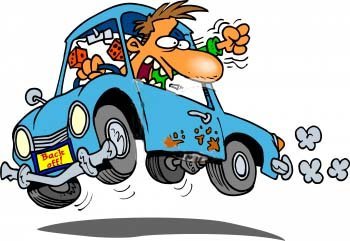Many of whom are prone to sudden emotional outbursts or inappropriate reactions. According to psychiatrists, road rage drivers seem to suffer from intermittent explosive disorder. In fact, not all incidents of road rage can be attributed to a mental disorder. Some experts believe that drivers learn aggressive behavior from observing their parents and watching numerous examples of simulated road rage on television. There is no doubt that driving has always been a stressful exercise and activity. Many experienced drivers develop what experts called ‘anxiety coping mechanism’ for the daily driving errors of others, that there is always the possibility of a major accident round the corner of the road or around a hazardous bend of a road.
With all these factors to consider, it is easy to note why some drivers may be especially anxious or defensive. If another driver does something wrong or reckless, the result can be explosive and uncontrolled reaction which we recognize as road rage.
Therefore, how can road rage be prevented? Some psychologists recommend that people who tend to get angry on the road should undergo relaxation therapy. There should also be a developing traffic control systems that allow optimal flows and therefore reduce road congestions. And the ability to flash messages of courtesies to other road users should be considered, as this will definitely eliminate irritation and anger on the part of a driver affected or vulnerable of road rage. These days, little can be done to prevent road rage, although defensive driving should help reducing potential flash points. Nevertheless, the Mauritius road system is not a war zone, it is just another place where people interact and try to get along. The phenomenon of road rage simply tells us that not everyone is capable of that.
A glance at our roads would reveal that a considerable number of our motorists do not even seem to know the basics of good driving. Nor do they seem to know the basic traffic laws of the country. This is the reason why a tough law and order approach needs to be adopted by the authorities in relation to this crisis on our highways.
According to the National Transport Authority (NTA) we have today just over 400,000 vehicles on our roads. Little has been done in the expansion of road works by successive governments which have led to this sorry status quo. We should consider also the environmental effect of the increase in volume of motor vehicles on our roads.
Nouvelles connexes



